
St Thomas' Hospital is a large NHS teaching hospital in Central London, England. Administratively part of the Guy's and St Thomas' NHS Foundation Trust, together with Guy's Hospital, Evelina London Children's Hospital, Royal Brompton Hospital and other sites. It is also a member of King's Health Partners, an academic health science centre, and is one of three sites used by King's College London GKT School of Medical Education.

Sidney Herbert, 1st Baron Herbert of Lea, PC was a British statesman and a close ally and confidant of Florence Nightingale.

Mary Jane Seacole was a British nurse and businesswoman.

The Guards Crimean War Memorial is a Grade II listed memorial in St James's, London, that commemorates the Allied victory in the Crimean War of 1853–56. It is located on Waterloo Place, at the junction of Regent Street and Pall Mall, approximately one-quarter of the way from the Duke of York Column to Piccadilly Circus.

The Florence Nightingale Museum is located at St Thomas' Hospital, which faces the Palace of Westminster across the River Thames in South Bank, central London, England. It is open to the public five days a week, Wednesday to Sunday 10:00am until 5:00pm.
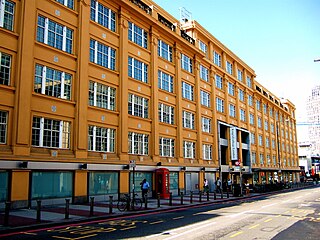
The Florence Nightingale Faculty of Nursing, Midwifery & Palliative Care is an academic faculty within King's College London. The faculty is the world's first nursing school to be continuously connected to a fully serving hospital and medical school. Established on 9 July 1860 by Florence Nightingale, the founder of modern nursing, it was a model for many similar training schools through the UK, Commonwealth and other countries for the latter half of the 19th century. It is primarily concerned with the education of people to become nurses and midwives. It also carries out nursing research, continuing professional development and postgraduate programmes. The Faculty forms part of the Waterloo campus on the South Bank of the River Thames and is now one of the largest faculties in the university.
Mark Bostridge is a British writer and critic, known for his historical biographies.
Rosalind Frances Nash, née Shore-Smith was a journalist and co-operator, and the niece and confidante of Florence Nightingale. She assisted in some of Nightingale's publications, and wrote on her behalf to Karl Pearson while he was writing his biography of Francis Galton.

Agnes Elizabeth Jones of Fahan, County Donegal, Ireland became the first trained Nursing Superintendent of Liverpool Workhouse Infirmary. She gave all her time and energy to her patients and died at the age of 35 from typhus fever. Florence Nightingale said of Agnes Elizabeth Jones, ‘She overworked as others underwork. I looked upon hers as one of the most valuable lives in England.’

Arthur George Walker was an English sculptor and painter. Among his best-known works are several war memorials and the statue of Florence Nightingale in Waterloo Place, London.
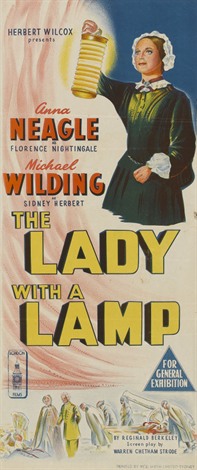
The Lady with a Lamp is a 1951 British historical drama film directed by Herbert Wilcox and starring Anna Neagle, Michael Wilding and Felix Aylmer. The film depicts the life of Florence Nightingale and her work with wounded British soldiers during the Crimean War. It was shot at Shepperton Studios outside London. Location shooting took place at Cole Green railway station in Hertfordshire and at Lea Hurst, the Nightingale family home, near Matlock in Derbyshire. The film's sets were designed by the art director William C. Andrews. It is based on the 1929 play The Lady with a Lamp by Reginald Berkeley.
Florence Nightingale is a 1915 British silent historical film directed by Maurice Elvey and starring Elisabeth Risdon, Fred Groves and A. V. Bramble. The film portrays the life of Florence Nightingale, particularly her innovations in nursing during the Crimean War (1854–56). The film was based on Edward Tyas Cook's biography of Nightingale.
Edith Helen Paull was an Indian medical nurse from Uttar Pradesh associated with the Indian Red Cross Society.
Florence Nightingale (1820-1910) was an English social reformer and statistician, and the founder of modern nursing.
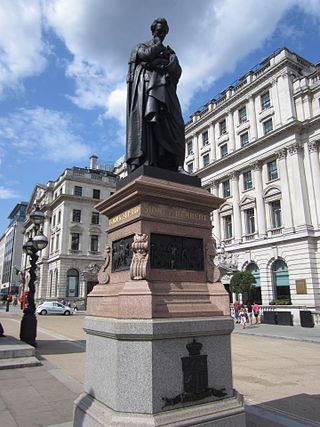
The statue of Sidney Herbert, 1st Baron Herbert of Lea is an outdoor sculpture in London, England. Created by J. H. Foley, it was erected by public subscription in 1867 and was originally placed in the courtyard of Cumberland House, Pall Mall. It moved with the War Office to Whitehall in 1906, where it was placed in the courtyard of the new War Office building; but eight years later it was moved again to Waterloo Place to stand alongside the Crimean War Memorial, where it is paired with a statue of Herbert's friend and fellow reformer Florence Nightingale.
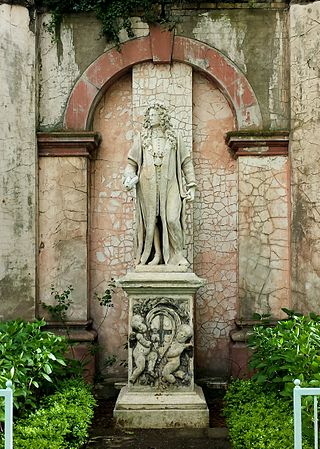
The statue of Robert Clayton stands at the entrance to the North Wing of St Thomas' Hospital, Lambeth, London. The sculptor was Grinling Gibbons, and the statue was executed around 1700–1714. Sir Robert was a banker, politician and Lord Mayor of London. As President of St Thomas', he was responsible for the complete rebuilding of the hospital, and associated church in the late 17th century. The statue was designated a Grade I listed structure in 1979.
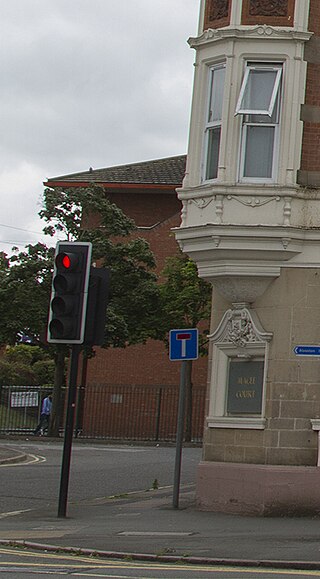
The Florence Nightingale Community Hospital, formerly the London Road Community Hospital, is a community hospital on London Road in Derby, England. It was established in 2009. It is managed by the University Hospitals of Derby and Burton NHS Foundation Trust. The other main hospital in Derby is the Royal Derby Hospital.
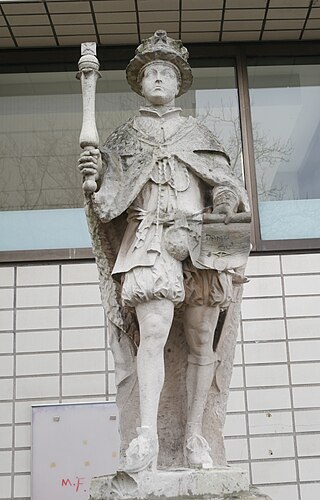
The statue of Edward VI by Thomas Cartwright at St Thomas' Hospital, Lambeth, London is one of two statues of that king at the hospital. Both commemorate Edward's re-founding of the institution in 1551. The statue was designed by Nathaniel Hanwell and carved by Thomas Cartwright in 1682, during the rebuilding undertaken by Sir Robert Clayton when President of the hospital. The statue originally formed the centrepiece of a group of figures which adorned the gateway on Borough High Street. It was moved to its current location at the north entrance to the North Wing on Lambeth Palace Road in the 20th century. It was designated a Grade II* listed structure in 1979.

The statue of Edward VI by Peter Scheemakers at St Thomas' Hospital, Lambeth, London is one of two statues of the king at the hospital. Both commemorate Edward's re-founding of the hospital in 1551. It was moved to its current location inside the North Wing of the hospital in the 20th century. The sculpture was designated a Grade II* listed structure in 1979.

The statue of Mary Seacole stands in the grounds of St Thomas' Hospital, Lambeth, London. Sculpted by Martin Jennings, the statue was executed in 2016. It honours Mary Seacole, a British-Jamaican who established a "British Hotel" during the Crimean War and who was posthumously voted first in a poll of "100 Great Black Britons".
















